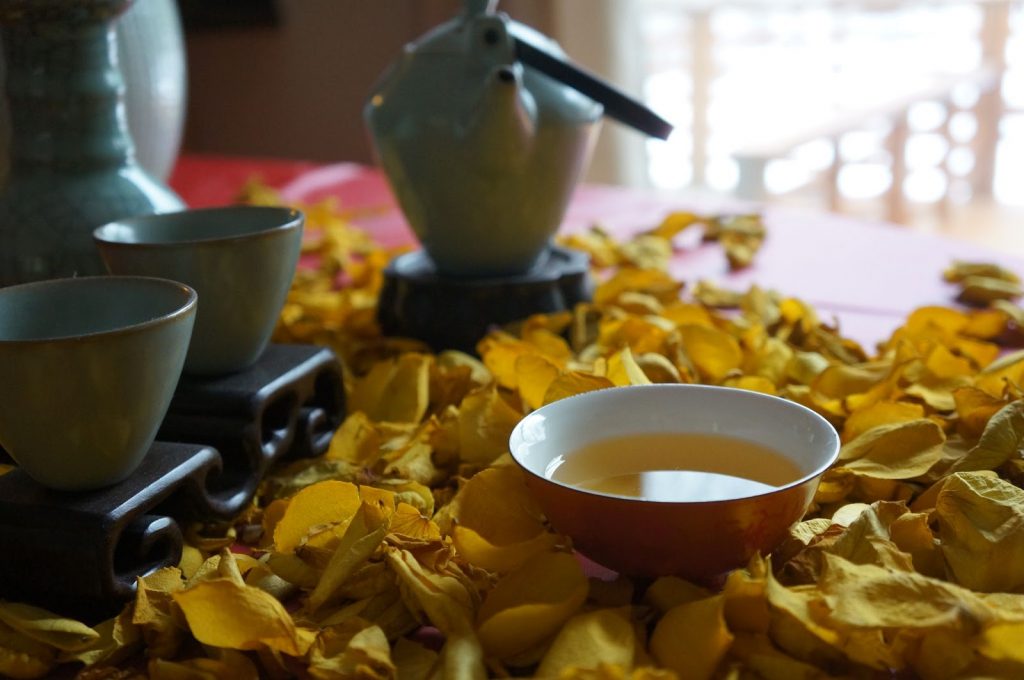March 8, 2023
Indy schools provide students with an exceptionally stimulating curriculum created by passionate teachers. Don’t we spend hours thinking about different ways to present content and hope for a rested, alert, and curious student that is ready to soak it all up? With so much enrichment being offered all day long, we have had a much harder time creating a schedule that allows for ebb and flow. More can be easily justified, and less is much harder to implement. Ebbing is critical for the rejuvenation of the mind, body, and spiritual side of our students and ourselves. During my work as the director of Comparative Arts at the Interlochen Arts Academy, my classes started at 3 p.m. and finished at 6 p.m., often with additional rehearsals after dinner. In the late afternoon, the youngest (14+) could barely keep their eyes open after a long day of academic classes, and even seniors were in need of a pick-me-up. It occurred to me that it would be helpful to introduce soul-feeding rituals into my curriculum so that I could provide some respite and regeneration. I called this Turtle Time and the idea is based on the soul-enriching principles of the Zen Arts. Several teachers have implemented this idea, often by dedicating a corner in their classroom for recuperation time. For the purpose of this article, a small shelf or area to store your Zen materials can be a visual signal that you are committed to some regular Turtle Time.

You do not have to be a Buddhist or a scholar of Zen to embrace these rituals. It is all about elevating and beautifying simple things like breathing, walking, gardening, or drinking tea. Zen Arts celebrate the aesthetic and physical experience of life and are often called the artless arts. Students learn the practice of no-practice, the making or doing of something without a goal in mind. Zen Arts make time to attend to your body, to nature, and to nourishment in all of its forms by practicing mindfulness. It is a canon of simplicity, spontaneity, and humility.
How to begin? Admittedly I was nervous to dip my toes into Zen. I felt that I did not know enough to do it justice.
I enlisted the help of poet Holly Wren Spaulding, who led a week-long Zen Arts workshop. She introduced the students to the idea of Wabi-Sabi and The Still Point. Since I am a movement teacher, I used the idea of Still Point to develop the refresher rituals that I will describe in this article.
Wabi-Sabi
Wabi-Sabi is the philosophy of impermanence. Wabi describes humble simplicity as promoting a detachment from materialism and finding gratification in spiritual richness. Sabi concerns itself with the passage of time, accepting that things age and decay. Practicing Wabi-Sabi forces you to look deeper and find nuance in your surroundings. It sounds complex and is and is not, like all things in Zen. The idea is an ocean, the entry point starts with a tiny drop of water. Students love searching and finding Wabi-Sabi. You can find a few examples of their Wabi-Sabi here.
Wabi-Sabi Ritual
- Ask your class to venture outside for 15 minutes and take pictures of their idea of Wabi-Sabi.
- When they return, have them upload the images on a shared Google Doc.
- Discuss the experience.
- How does Wabi-Sabi fit into your teaching discipline? How could the students find Wabi-Sabi in the teaching unit you have planned?
Still Point Rituals
The Still Point is a meditation technique where we practice focusing our mind on the now without any concern for the past and future. This is very hard to do. To cultivate this idea, it is helpful to concentrate on the breath moving in and out of our lungs and to coordinate a simple movement with the action of the breath. As you are doing this, notice how simple is not equal to easy.
Refresh Quickies (3 minutes)
Balance
- Have everyone stand up and close their eyes.
- Take 2 rounds of breath, in through the nose, out through the mouth.
- Breathe in, and rise on your toes slowly.
- Breathe out, and lower your heels slowly.
[Repeat 3 times]
Energy Wash
- Have everyone stand up and close their eyes.
- Shift your weight slowly from right to left and back to the center.
- Rub your hands as if you are holding a silk scarf in your hands until you feel some warmth.
- Wash the energy over your face and rest your hands gently on your eye-balls breathing slowly.
[Repeat three times]
Hydration Boost (5 minutes)
- Consider having plants or succulents in your classroom. Ask your students to bring one each. Make a jungle classroom!
- Every week, have your students take a few minutes to water their plants, clean the leaves, and rotate the pot.
- Ask your students to talk to the plants while they are watering. What would one say to a plant?
- If you can not turn your classroom into a jungle do the following hydration exercise.
- Everybody closes their eyes and takes 10 deep breaths.
- Imagine you are watering your own body with breath.
- Feel the fresh water like a river running through your veins, cool and soothing.
- If it’s cold outside you can do the same exercise imagining warm water massaging your organs and flushing your inner being.
Rev the Engine (3 minutes)
This sequence can be done seated or standing.
- Close your eyes.
- Tap your fingers gently, and wake up your abdomen, heart space, lower back area, and the top of the head.
- Reach your arms to the sky and gaze upwards.
- Take three breaths.
- Slowly release the arms and the spine like rain dripping down a window.
If you have the ability to dedicate more time to the artless arts, here are a few additional rituals that the students have loved. They take one or two class periods and could be a beautiful, restorative activity at the end of a semester.
Enso Ritual (Calligraphy & Painting)
You and your class will be painting a Zen Circle (called an Enso)
For this beautiful ritual, ideally, you need rice paper and Japanese ink and brush. In a pinch, any large paper, brushes, and paint will work.
Lay out the paper, and dip the brush in ink.
In one breath
draw a circle.
Do this many times.
Pin the Enso’s across the classroom.
Ikebana
Ikebana is the art of connecting nature with the human form by arranging flowers and stems into a vase or other vessel. Learning a little bit about Ikebana will make anyone a lifelong follower of this beautiful art, not to mention the wow effect in your home or dorms. Gone are the days when you mindlessly pick up some flowers at the grocery and put them in a vase! Ikebana teaches us principles of perspective, and the relationship between shape, dimension, and the negative space in between. Students will learn about the elements of an Ikebana arrangement: the Shin, Soe, and Hikae, and the specific angles that create harmony and a beautiful living sculpture for any room. They will also pick a variety of containers to home the flowers and branches and get creative with choosing unusual objects.
Following is a basic Ikebana tutorial to get you started:
Tea Ceremony

Of all the artless arts, drinking tea cultivates community like no other. In the UK when a seemingly insurmountable problem arises, all stops, and the familiar call sets in. Put the kettle on! Life is always better after tea, we can have a chat and a laugh, hold the warm mug and plan our next move. Creating a tea corner with a variety of teas is a good way to build community at the beginning of the year and I found that parents happily donated boxes of wonderful teas. Our international students would bring their own favorite kind. Elizabeth Gourley, former director of libraries at the Interlochen Arts Academy led a tea ceremony class with my students a few years ago.
“While living in China, I had many occasions to visit and experience the rich and ancient history of tea culture in several different Asian settings. These sessions have not only been a means for providing the physical sustenance of thirst-quenching but a fundamental social bonding that involves an appreciation and sensory experience of the ritual that tea holds.”
Here is a mini guide to Beth’s tea-drinking sessions!
Finally, if any of the above seems daunting, aromatherapy is the bomb, loved by all!
Essential Oil Ritual
Keep a small supply of essential oils in the Zen corner: Lavender, Peppermint, Sweet Orange, Bergamot, and Eucalyptus are my favorites. You can buy inexpensive essential oil bottles or roll ones to use on the skin or find recycled plastic spray bottles to use as room/bed linen spray. The ideal size fits comfortably in their backpack or a small pouch so they can spray it on their hands and breathe a few deep breaths when feeling sleepy or anxious.
How to begin?
Have the class research essential oils and pick their favorite tryptic. Just like a perfume has different levels of note, a good aromatherapy blend balances top, medium, and low notes.
For a relaxing blend, mix ⅔ of the top note, ⅓ of the medium note, and a dash of the low note. You can find many recipes on the web.
The easiest way to introduce students to essential oils is to purchase a diffuser for your classroom. Open the windows for a few minutes and use a few drops to set the mood. A few drops create a positive experience when a new class enters your room!
Teaching the artless arts is a joy. As a teacher you become a student opening yourself up to a new experience of embodiment. Over the years exposing students to Zen in tiny increments or longer workshops I have always walked away with my cup filled up. The students are drawn to them and often ask to lead the sessions once they become familiar with the rituals, giving you a chance to step back, watch and renew as well. Remember that this is not about proficiency but about the experience and the knowledge that comes with repeating a simple task and giving it our full attention.
Enjoy Turtle Time and if you use any of these rituals, please let me know how they were received. Send a note or a picture of your classroom to me.
You may also be interested in reading more articles written by Nicola Conraths for Intrepid Ed News.

